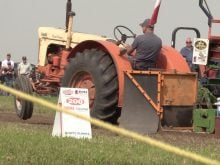Canada’s dairy farmers don’t want anyone to doubt their commitment to animal welfare.
Their national organization, along with the National Farm Animal Care Council, has updated its code of practice for care and handling.
The original code had been developed in 1990, said Michael Hall, an Ontario dairy farmer who chaired the development committee, and new research necessitated changes.
For example, pain relief during dehorning and debudding is now an industry requirement, and tail docking is no longer acceptable.
Read Also

Government, industry seek canola tariff resolution
Governments and industry continue to discuss how best to deal with Chinese tariffs on Canadian agricultural products, particularly canola.
Hall said the document may contain information some producers would think is obvious. However, he reminded them that consumers and lobbyists are looking at it, too.
He noted that People for the Ethical Treatment of Animals is attacking the slogan “America’s Dairyland” on Wisconsin licence plates. The organization wants to replace it with “America’s Cow Hell.”
Jackie Wepruk, NFACC co-ordinator, said the new code contains a clearer link to the science behind animal care.
She said that at a Canadian Coalition for Farm Animals conference a few years ago the dairy industry was seen by the animal rights group as having an easy ride despite “breaking every rule.”
“They’re looking for mistakes,” she said of such groups.
Following the new code will prevent those mistakes.
Wepruk also said dairy was the first to update its code using the science-based link and beef, pork and equine will follow.
Well-known animal welfare researcher David Fraser called it the “most successful code development I’ve ever seen.”
Codes can inform the public, he said, and farmers should not underestimate the importance of that.
Fraser said most dairies are still family owned and reflect the value of the family farm. Lobbyists can dislodge that trust by instilling the notion of the factory farm.
Looking at some of the large industrial dairies in the United States it’s not hard to see how that impression was formed.
“The glow of the halo of the family farm is not going to shine forever,” he warned producers.
“There are significant problems to be solved.”
These include genetic selection that resulted in cows reaching the end of their productive life within two or three lactations, high rates of calf mortality and the “widely unrecognized problem” of lameness as high as 30 percent.
Agriculture Canada research scientist Jeff Rushen said research is still underway in these areas and others, such as the best type of calving pen, colostrum quality and milk replacer for calves.

















